TILCHINALINK Official WeChat

TILCHINALINK Official WeChat Mini Program

TILCHINALINK Official Alipay Mini Program (Hong Kong)

TILCHINALINK Official Alipay Mini Program (Mainland China)

Please scan the QR Code with WeChat to purchase tickets

環島中港通
Cross Boundary Buses
Travel Package
Rental
Travel Guide
Contact
- 繁 | 简 | EN
-
CS Hotline
Hong Kong: (852) 2979 8778
China: (86) 4008 822 322
Search Now

Ruins of St. Paul's
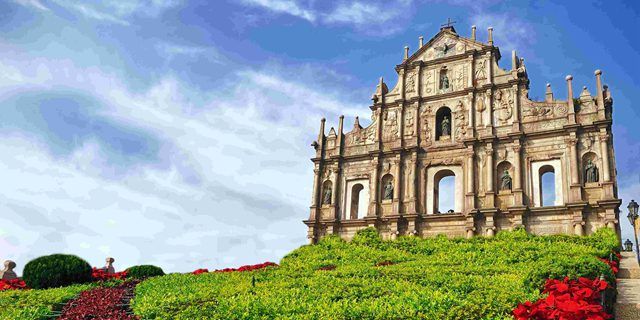

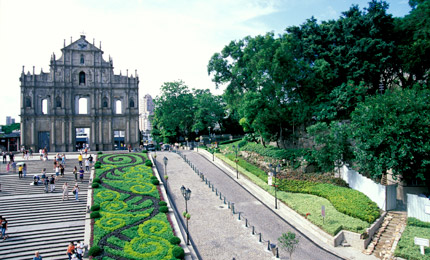
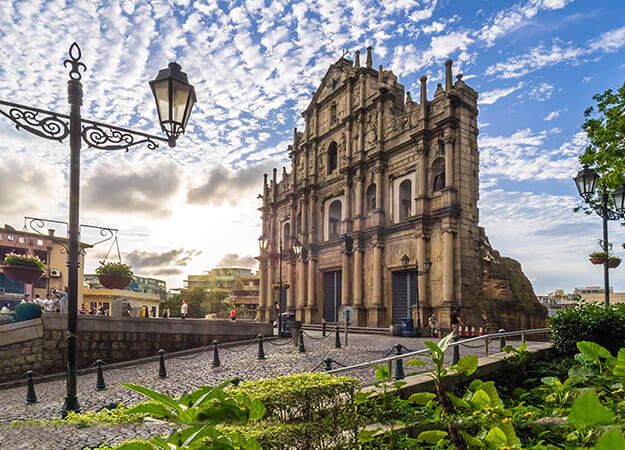
The Ruins of St. Paul's refer to the facade of what was originally the Church of Mater Dei built in 1602-1640, destroyed by fire in 1835, and the ruins of St. Paul's College, which stood adjacent to the Church. As a whole, the old Church of Mater Dei, St. Paul's College and Mount Fortress were all Jesuit constructions and formed what can be perceived as the Macao's "acropolis". Close by, the archaeological remains of the old College of St. Paul stand witness to what was the first western-style university in the Far East, with an elaborate academic programme. Nowadays, the facade of the Ruins of St. Paul's functions symbolically as an altar to the city.
Address: Company of Jesus Square
Macau Tower Convention & Entertainment Centre
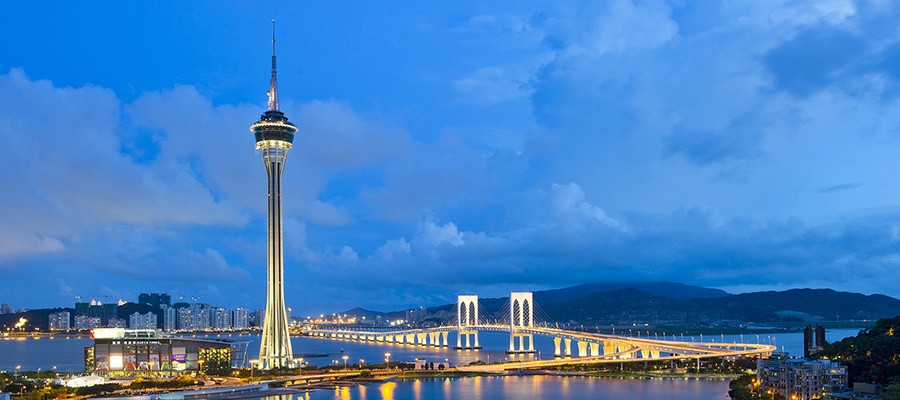

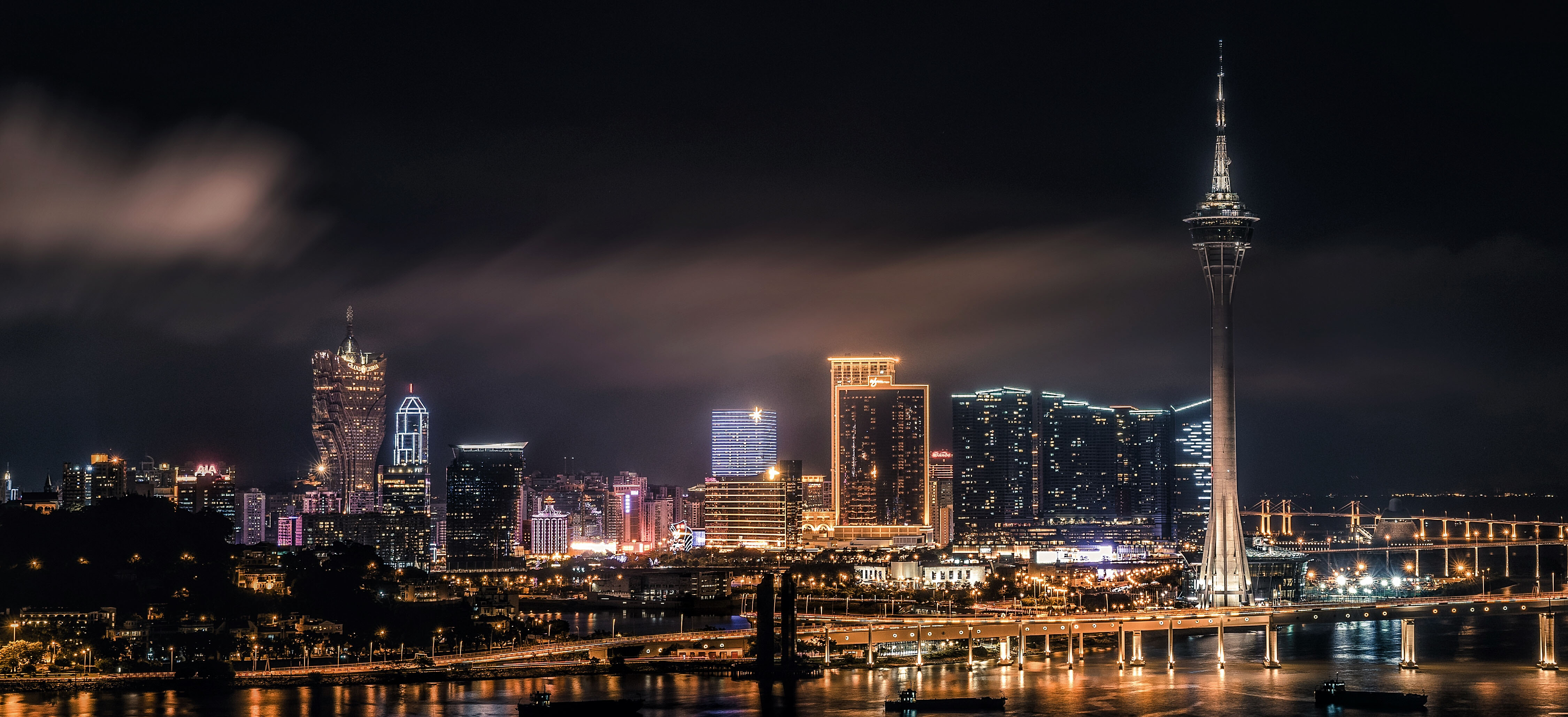

Opened on 19th December, 2001, Macau Tower is 338 metres in height. It is an elegant construction offering magnificent panoramic views all over Macao and much of the Pearl River Delta from its observation deck and revolving restaurant, at the 223-metre level. There is the opportunity to walk around the outside of the tower, for instance "Skywalk X".
Besides the tower, there are a 4-floor Convention and Entertainment Centre, restaurants, cinema, a 2-level basement and an outdoor plaza.
Address: Largo da Torre de Macau
Senado Square
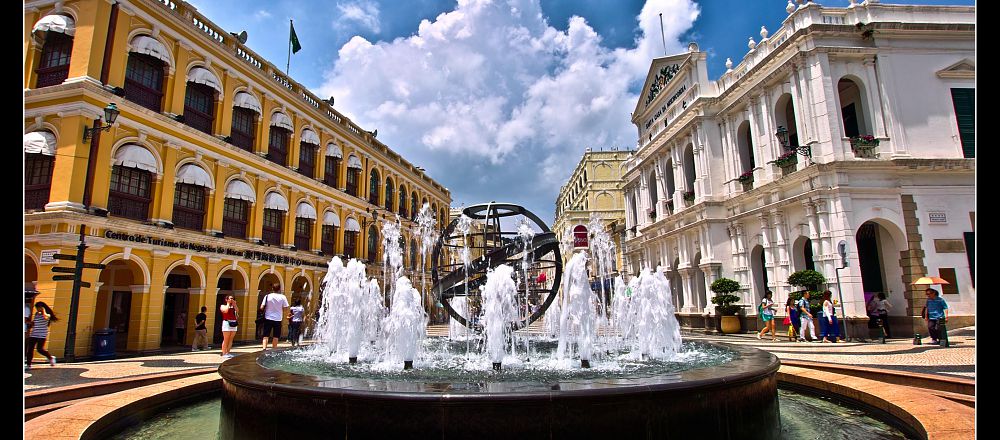

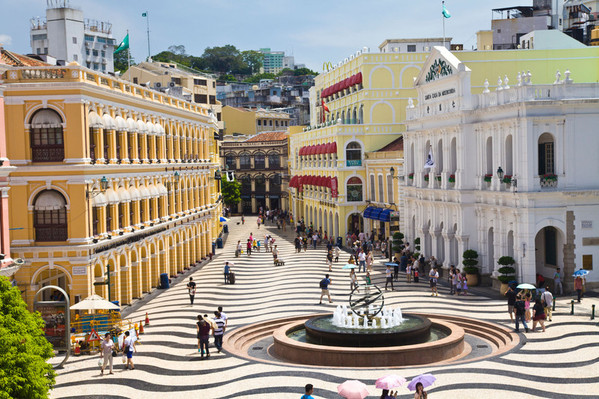
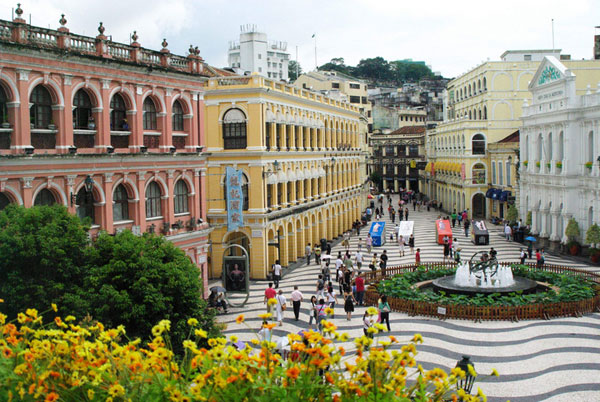
Senado Square has been Macao's urban centre for centuries, and is still the most popular venue for public events and celebrations today. Located close to the former Senate building, Sam Kai Vui Kun ( Kuan Tai Temple ) is also a reminder of the active participation of the local Chinese community in general civic affairs, providing a clear example of the multicultural dimension of the Macao community. The square is surrounded by pastel coloured neo-classical buildings, creating a consistent and harmonious Mediterranean atmosphere.
Address: Senado Square
A-Ma Temple
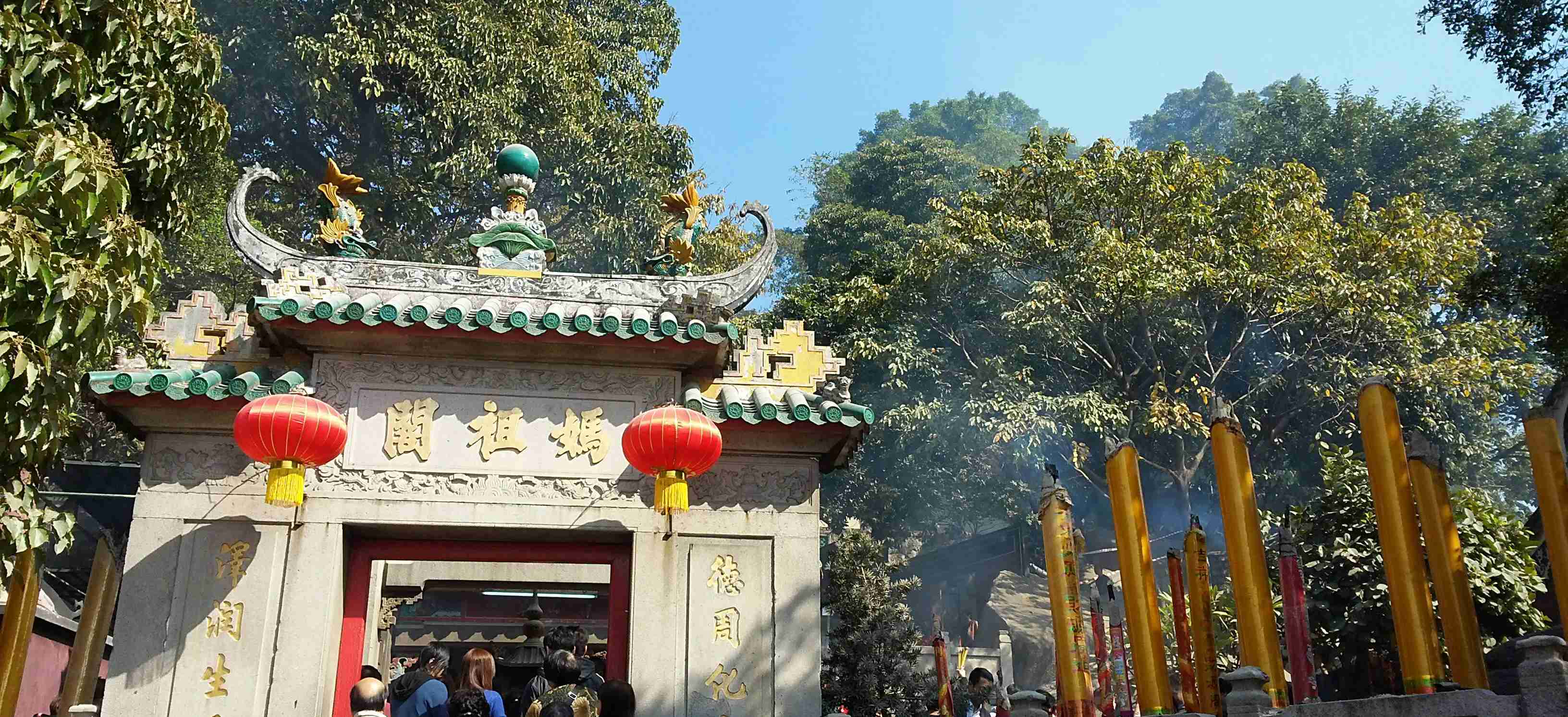

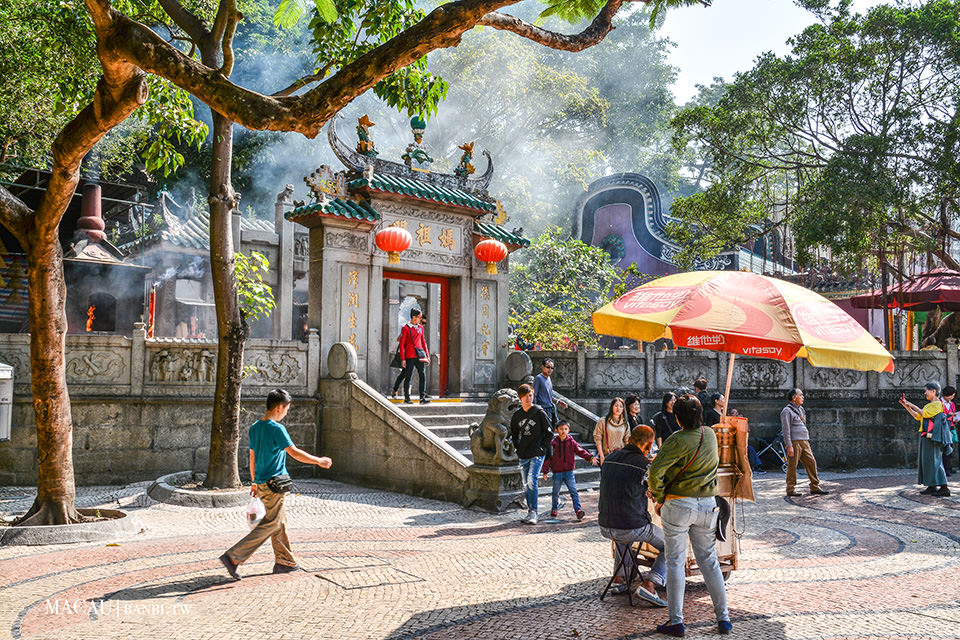
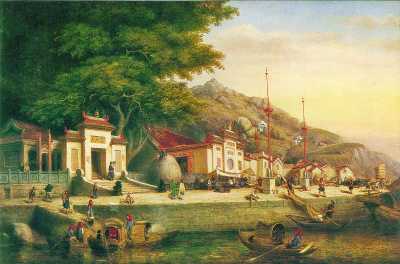
A-Ma Temple already existed before the city of Macao came into being. It consists of the Gate Pavilion, the Memorial Arch, the Prayer Hall, the Hall of Benevolence, the Hall of Guanyin, and Zhengjiao Chanlin (a Buddhist pavilion). The variety of pavilions dedicated to the worship of different deities in a single complex make A-Ma Temple an exemplary representation of Chinese culture inspired by Confucianism, Taoism, Buddhism and multiple folk beliefs.
Address: Barra Square
Mount Fortress



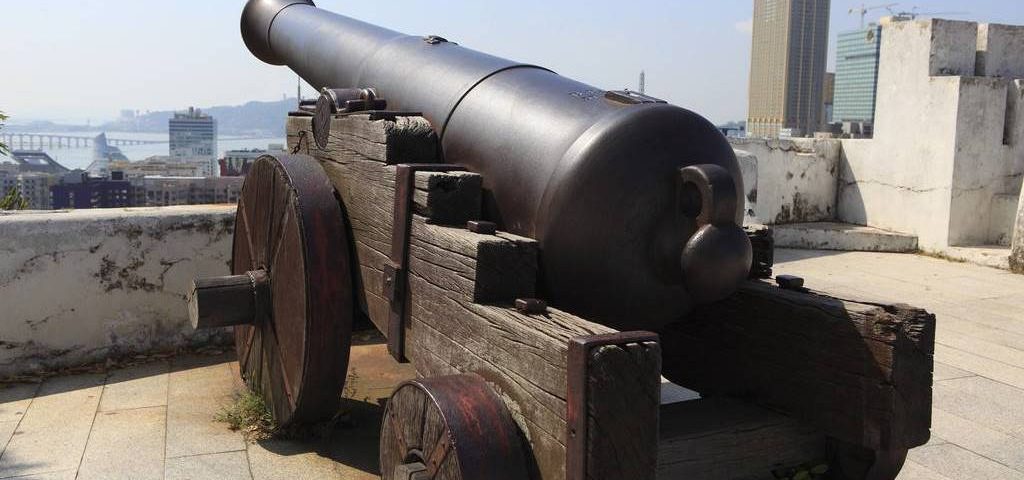
Built in conjunction with the Jesuits from 1617 to 1626, this was the city's principal military defence structure. The fortress was equipped with cannons, military barracks, wells and an arsenal that held sufficient ammunition and supplies to endure a siege lasting up to two years. The fortress covers an area of 10,000 square metres, in the shape of a trapezoid. The four corners of the fortress protrude to form bulwarks.
Nostalgia in Coloane
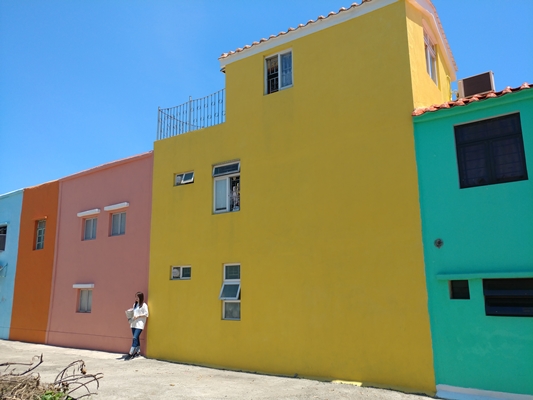


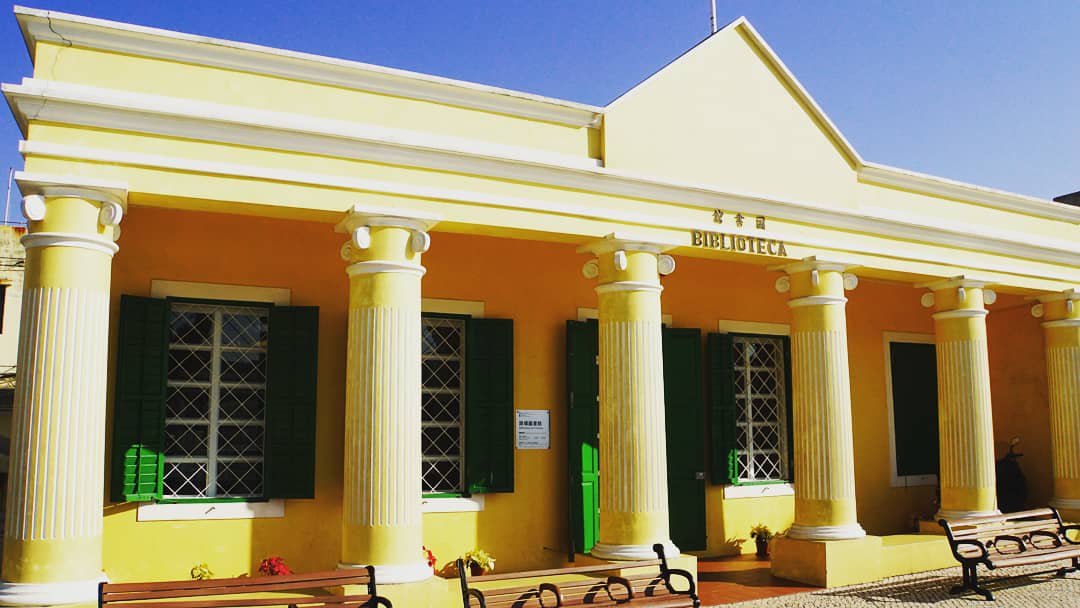
Embrace the tranquility of village life and enjoy local delicacies found in this old neighbourhood. Let the sea breeze softly caress your face. A journey that rejuvenates your soul.
1. Largo do Presidente António Ramalho Eanes - 2. Ancient Temple of Kun Iam in Coloane -3. Ancient Temple of Tin Hau in Coloane - 4. Tam Kong Temple in Coloane - 5. Coloane Library -6. Chapel of St. Francis Xavier - 7. Sam Seng Temple in Coloane - 8. Coloane Pier
St. Dominic's Church
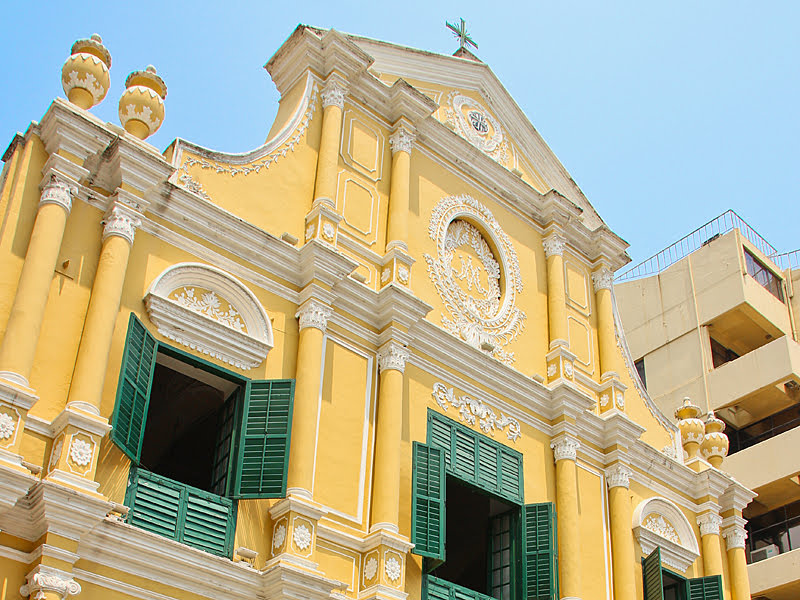

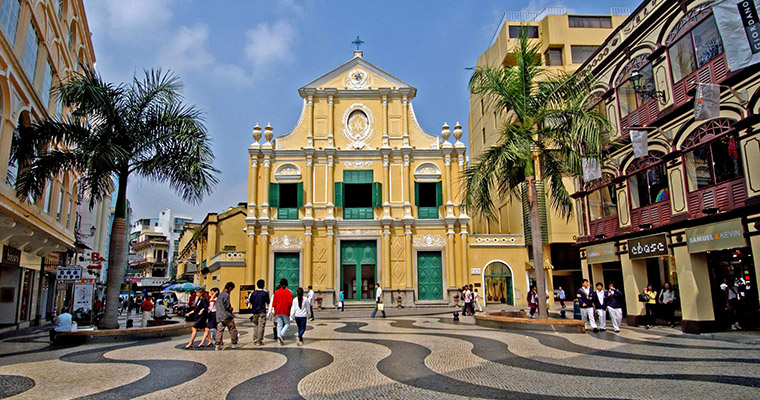
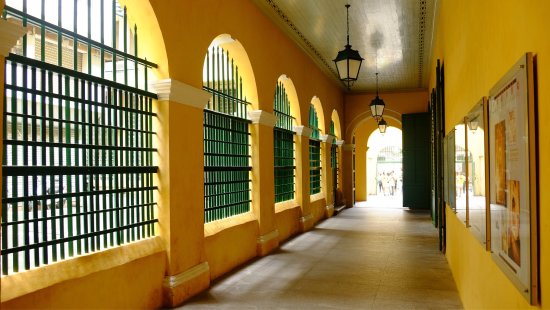
Founded in 1587 by three Spanish Dominican priests who originally came from Acapulco in Mexico, this church is also connected to the Brotherhood of Our Lady of the Rosary. It was here that the first Portuguese newspaper was published on Chinese soil, A Abelha da China ("The China Bee"), on 12th September 1822. The bell tower, at the back of the building, has been modified into a small Museum of Sacred Art, now exhibiting a collection of around 300 artifacts.
Address: St. Dominic's Square
Taipa Houses
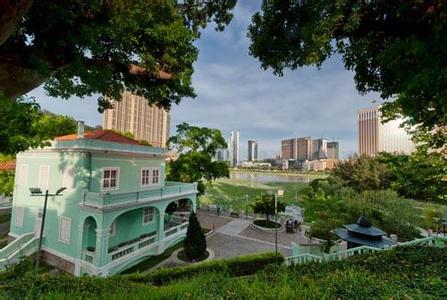

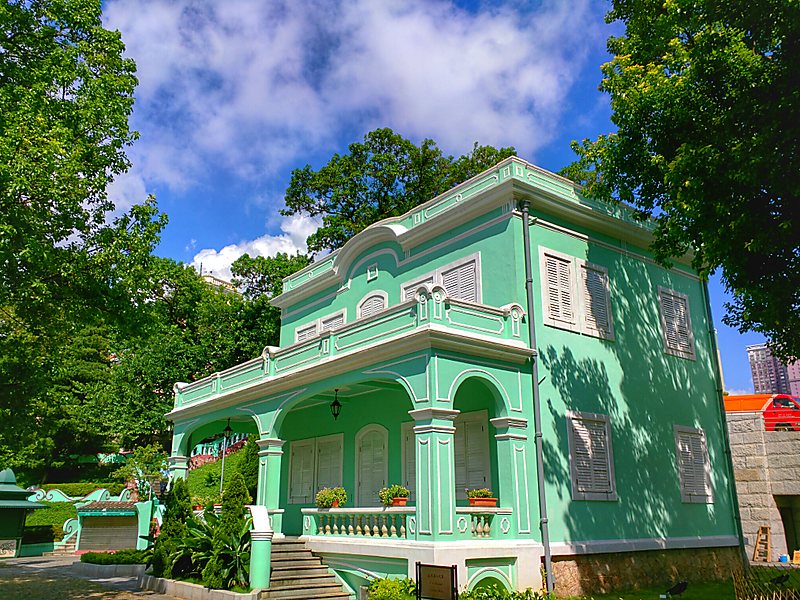
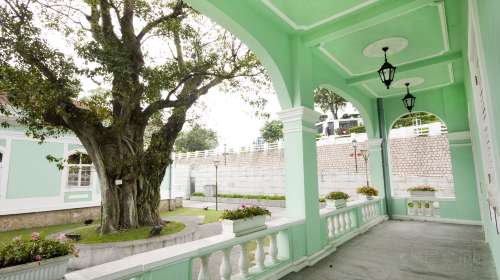
Acclaimed as one of the top eight sites of Macao, the Taipa Houses represents the charming Portuguese architectural style in Taipa. The Portuguese residences along Avenida da Praia, together with the neighbouring Our Lady of Carmel Church and the garden, comprise a picturesque landscape in which the five green houses stand out as the most representative.
These five houses, built in 1921, once served as the residences of senior civil servants, also namely Macanese families; in 1992, they were acknowledged as a building complex of architectural value. Later, the government decided to revamp the houses completely as a museum site, opened to the public at the end of 1999 as the ‘Taipa Houses-Museum’.
In September 2016, the Macao SAR Government re-capitalised on these five buildings by transforming them into the‘Macanese Living Museum’, ‘Exhibitions Gallery’, ‘Creative Casa’, ‘Nostalgic House’ and ‘House for Receptions’ from west to east, respectively. This project has converted the place into a combination of culture and creativity, with outdoor performances and leisure elements, making it a showcase of not only the culture of the Portuguese-speaking countries but of culture from all over the world.
Macanese Living Museum
The Macanese Living Museum recreates daily scenes from Macao’s past. The term ‘Macanese’ refers to the ethnic group whose Portuguese ancestors married Chinese, Malay and Filipinos from Southeast Asia, and Indians from South Asia, in Macao. The Macanese have their own dialect and lifestyle; while most of them share Western religious beliefs they are also deeply influenced by Chinese life patterns.
Exhibitions Gallery
The Exhibitions Gallery shows exhibitions from time to time to enrich local people’s leisure life. In addition, it is available for consulates to borrow to serve as an exhibition and exchange venue for world culture and art, thus introducing more cultural tourism elements through exchanges between Macao and other countries.
Creative Casa
The Creative Casa primarily serves as a platform for the exhibition and promotion of the culture and information of Macao and Portuguese-speaking countries, and the sale of specialty products. The ground floor displays and sells cultural products and publications with Portuguese characteristics and related to Taipa, and the first floor is a space for temporary exhibitions.
Nostalgic House
In the Nostalgic House, special exhibitions on the Macanese people and the Cotai district are organized from time to time in order to display the native culture, life, religion, architecture, and cuisine of the Macanese community and Cotai district in the past and present.
House for Receptions
The House for Receptions is not open to the public. It is a venue for official banquets, receptions and other activities.
Address: Avenida da Praia, Taipa, Macau
Macao Museum
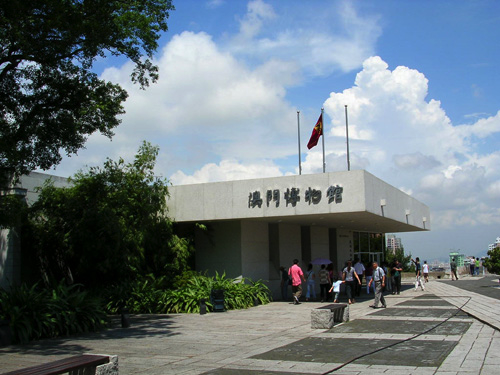

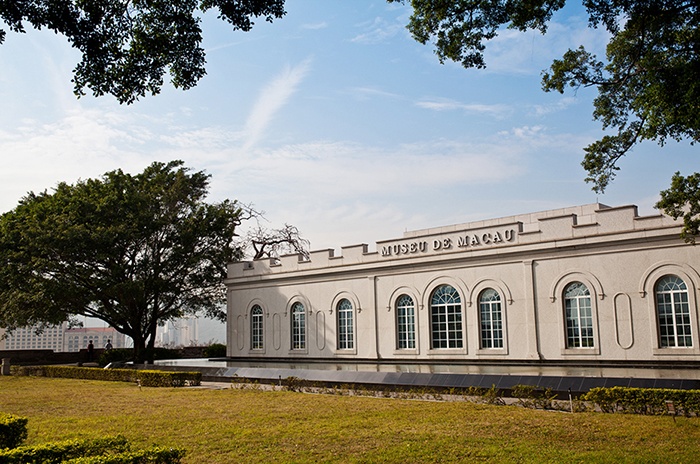
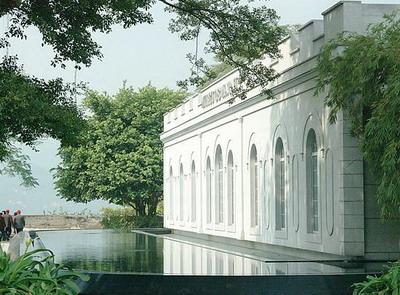
The Macao Museum is a historical and cultural museum with a vast number of objects of great historical value, which demonstrates the way of life and cultures of the various communities which have been inhabited the city for ages.
The first floor is a short and comparative presentation of the way western and Chinese civilizations were developed before the arrival of the Portuguese in the Pearl River Delta in the 16th century. Besides, history of Macao, commercial activities, religions and cultures of the two civilizations are also displayed. Mounting the stairs to the second floor, visitors have the opportunity to come into contact with different aspects of the popular art and traditions of Macao; such as people's daily lives, entertainment, religious ceremonies and traditional festivals. The third floor shows contemporary Macao including the characteristic aspects of city life. The way Macao has been portrayed in literature and the arts is prominently highlighted.
The Macao Museum is located in the Mount Fortress, which was built by the Jesuits in the early 17th century. For a long time, the Fortress was the city's principal military defence structure where public access was restricted. In 1965 this Fortress was converted into the Meteorological Services and later opened to the public. Built on top of the Mount Hill, the Mount Fortress offers a panoramic view of the city. On its west is the Ruins of St. Paul's. On 15th July 2005, the Historic Centre of Macao was officially listed as UNESCO World Cultural Heritage. The Mount Fortress and the Ruins of St. Paul's are significant historical monuments of the Centre.
The Macao Museum was opened on 18th April 1998, consisting of two underground levels and a third one above the fortress' top platform where the old Meteorological Services is housed. The architectural character and special configuration of the architecture has been retained and preserved.
Address: No. 112 Praceta do Museu de Macau
Old Taipa Village
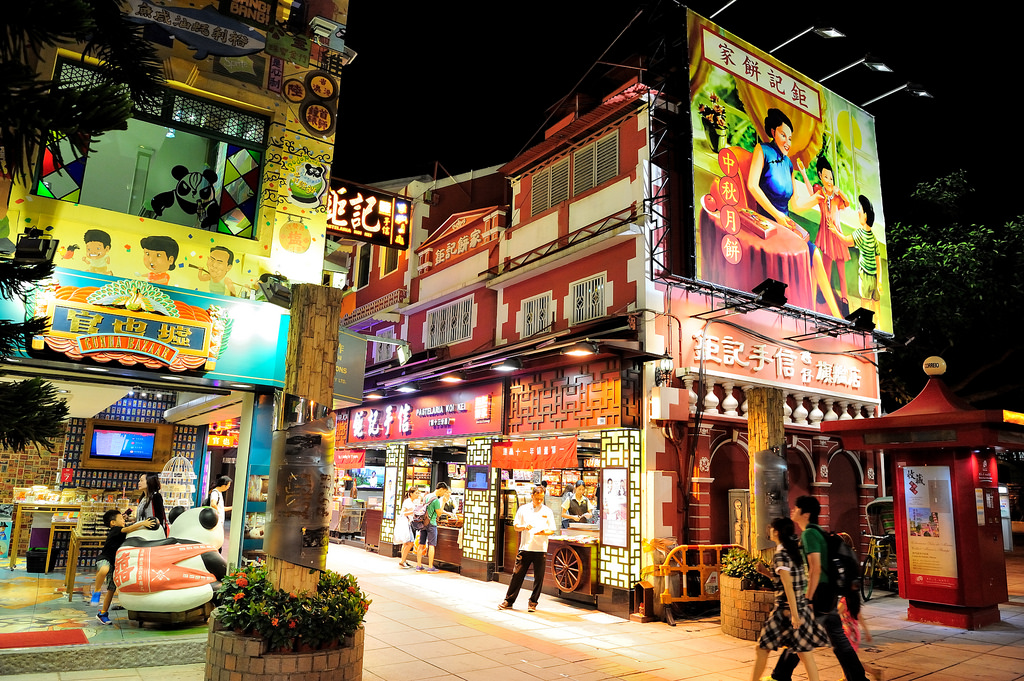

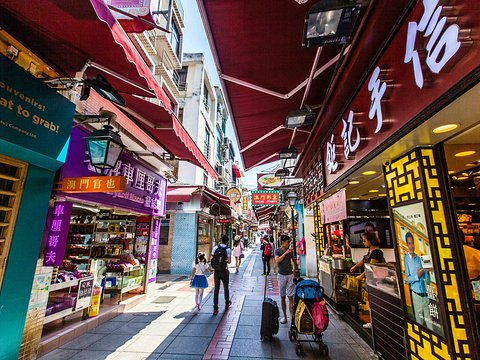

Filled with quaint souvenir shops and Macanese bakeries, the Old Taipa Village is the perfect place wander around on a lazy afternoon. Rua da Cunha, a long street stretching across the district, is famous for its many local restaurants and shops. For an authentic Macau shopping or dining experience, there is no better place on the island.
Hác-Sá (‘Black Sand’)
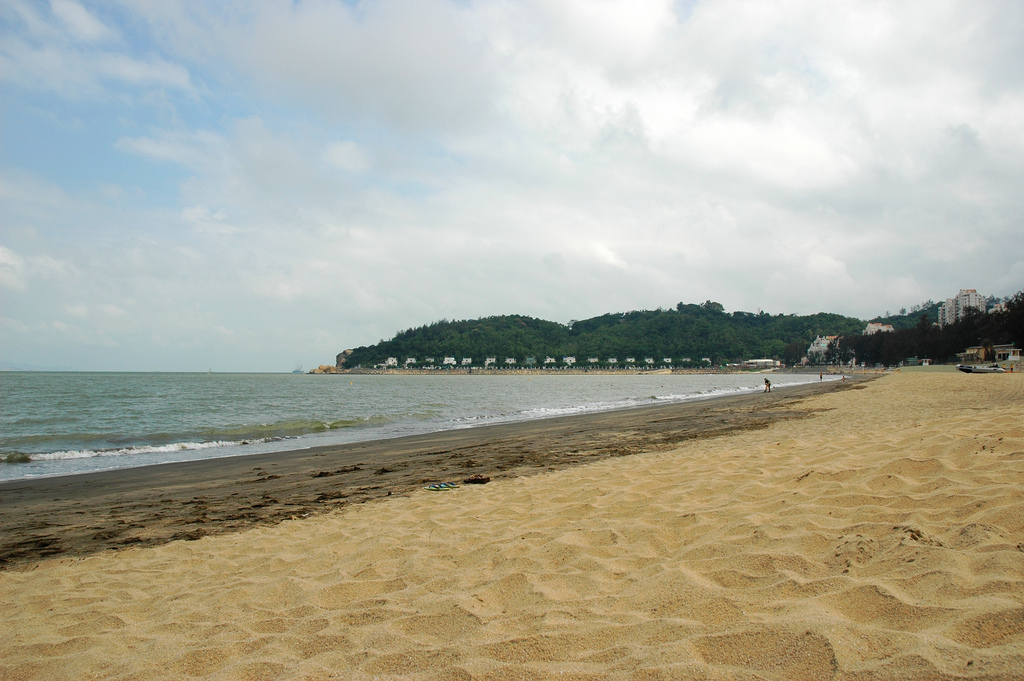

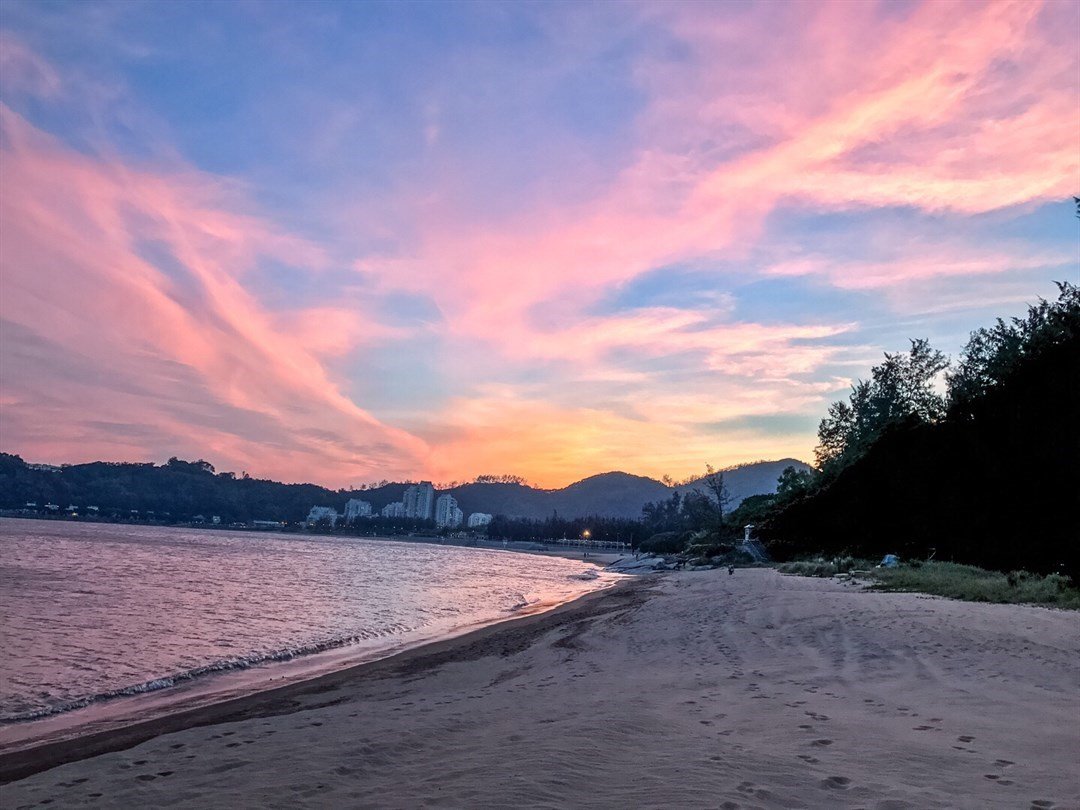
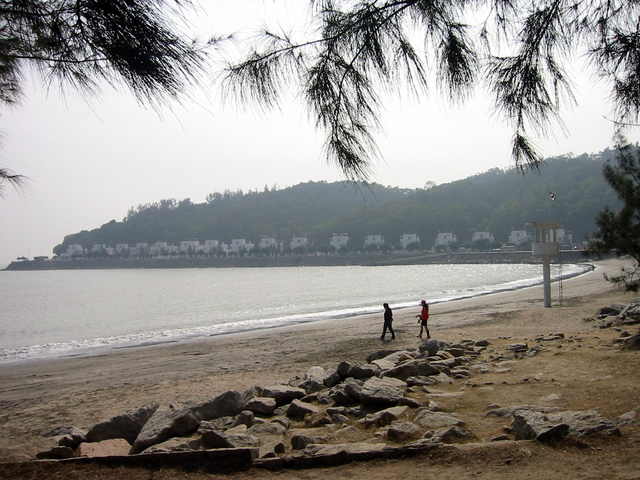
Hác-Sá (‘Black Sand’) Beach is Macao’s larger and more popular beach, both for its safe swimming and various other water activities like sailing and jet-skiing. Several BBQ-stalls ply their trade just off the beach, and families can enjoy tennis courts, swimming pool, picnic area, children’s playground, exercise area and several restaurants in and around the adjoining Hác-Sá Park.
Grand Prix Museum
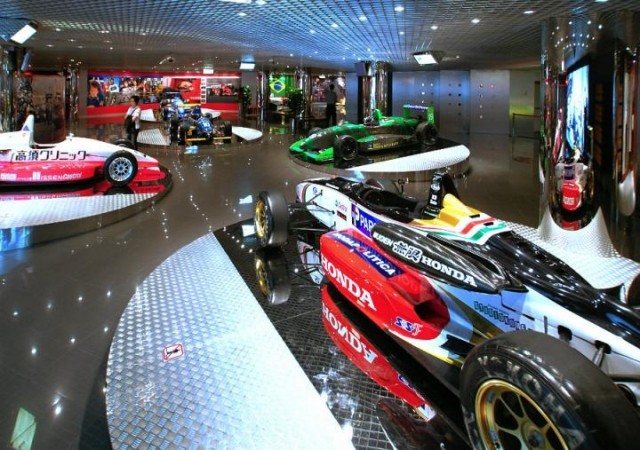

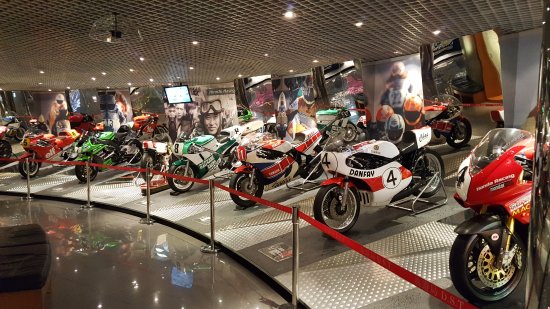
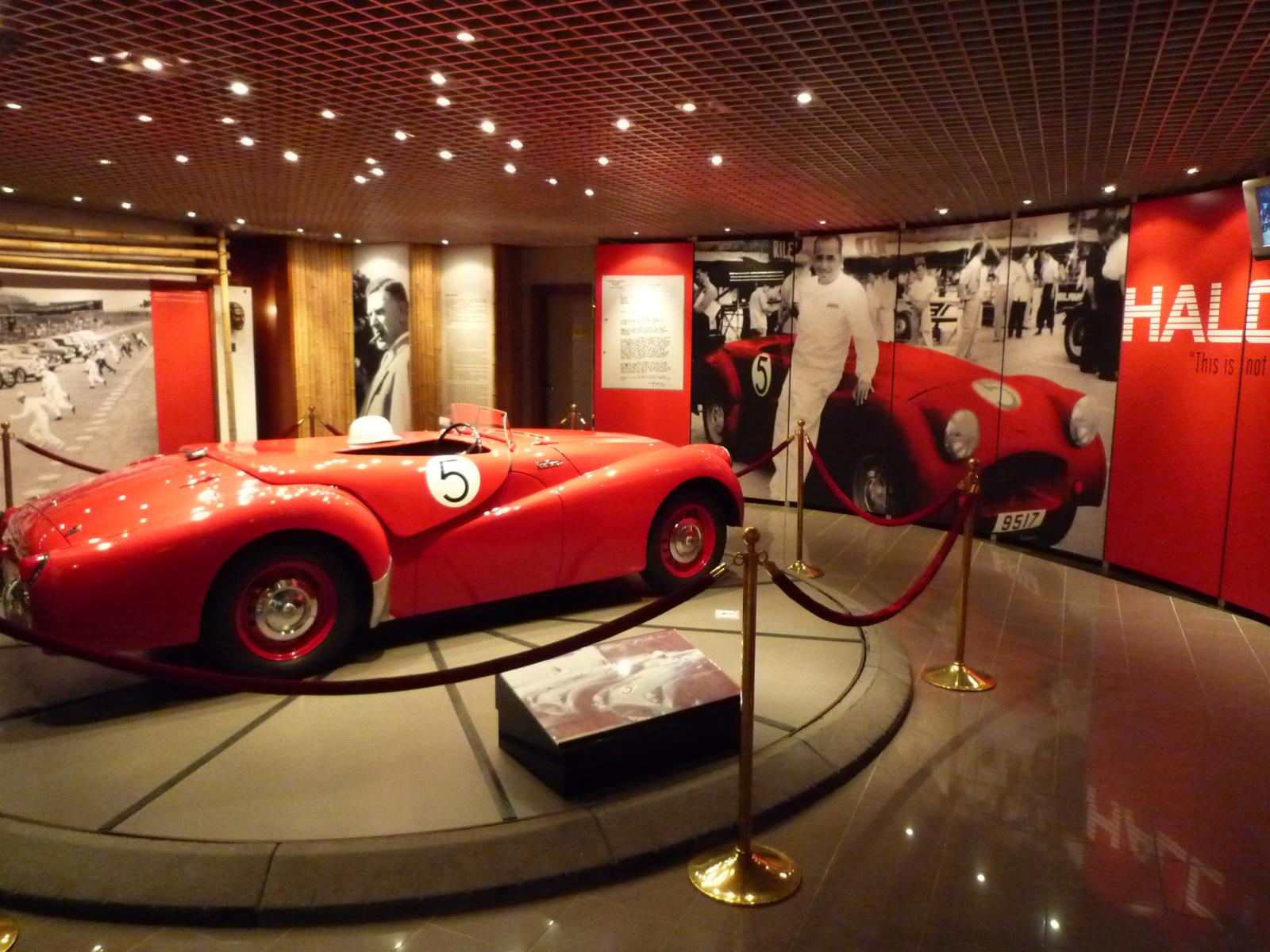
* To cope with the remodeling project, the Grand Prix Museum is temporarily closed until further notice.
Opened 1993 to celebrate the 40th anniversary of the Macau Grand Prix, which features a number of automobile and motorbike races and takes place every year in November. It started in 1954 due to the enthusiasm of a group of Macao residents and the support of the authorities. Today it is an international sports event that attracts thousands of tourists and racing enthusiasts to Macao, to watch the classic "Guia Race" and the "Formula 3 Grand Prix". As it takes place on a street circuit, which inevitably leads to a comparison with Monte Carlo, the Macau Grand Prix has been developing into a race that, due to the exactness and the need for precision which it imposes on the drivers, has had the participation of great names of the motor racing participating and which has also served as a launching platform for many other names, the visitor will certainly recognise while visiting the Grand Prix Museum.
In celebration of the 50th Macau Grand Prix, the Macao Government Tourism Office has carried out extensive renovations and modernization of the Museum.
The Museum pays tribute to individuals who have made extensive contributions to the success of the Grand Prix, namely Teddy Yip, Paul Du Toit, Laurel, Ayrton Senna and John Corsmit, among others. Come and discover the Grand Prix Museum, where a collection of magnificent machines that were raced and won the Guia circuit represent the history of one of the most exciting circuits in the world.
Address: Rua Luis Gonzaga Gomes, 431, basement (Tourism Activities Centre-CAT)
Macao Science Center



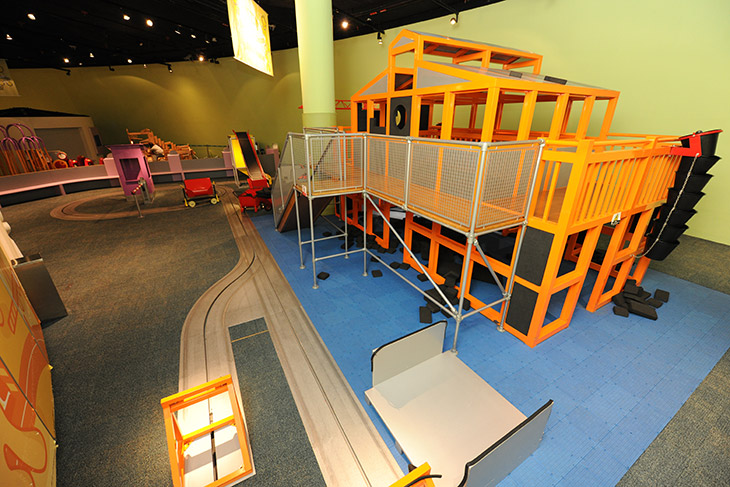
Macao Science Center was designed by world renowned architect Mr. I.M. Pei and Pei Partnership Architects. With a gross floor area of 20,000 square metres, Macao Science Center consists of the Exhibition Center, the Planetarium and the Convention Center.
Exhibition Center
The permanent galleries cover topics in Science for children, Technology, Environment and Life Style. The exhibitions seek to provide knowledge-oriented, scientific and interesting interactive exhibits, and allow visitors to explore science exhibitions to provide more diversified features to the visitors.
Planetarium
The first Planetarium in the world equipped with 3D and ultra-high definition projection system of 8,000 x 8,000 pixels, and is capable of playing interactive live shows and dome movies in 3D. Its powerful real-time astronomical database can take audiences onto a journey travelling freely in space and time.
Convention Center
The Convention Center includes a multi-functional Convention Hall and 4 Meeting Rooms. It is equipped with professional audio-visual facilities, simultaneous interpretation systems, and video conferencing equipment.
Address: Avenida Dr. Sun Yat-Sen, Macau
Guia Fortress (including Guia Chapel and Lighthouse)
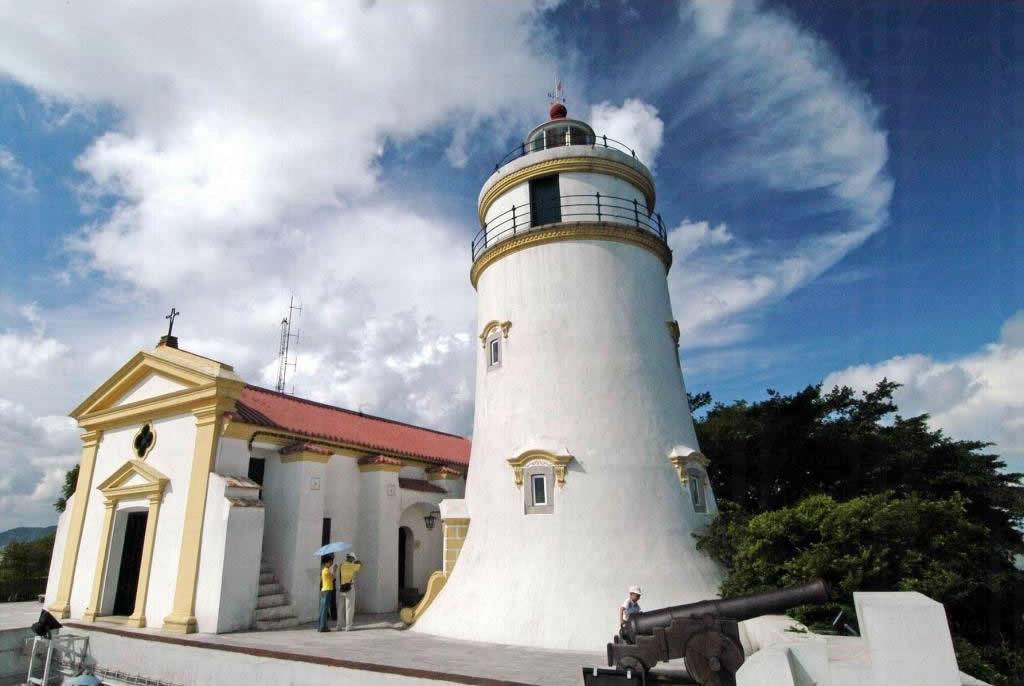

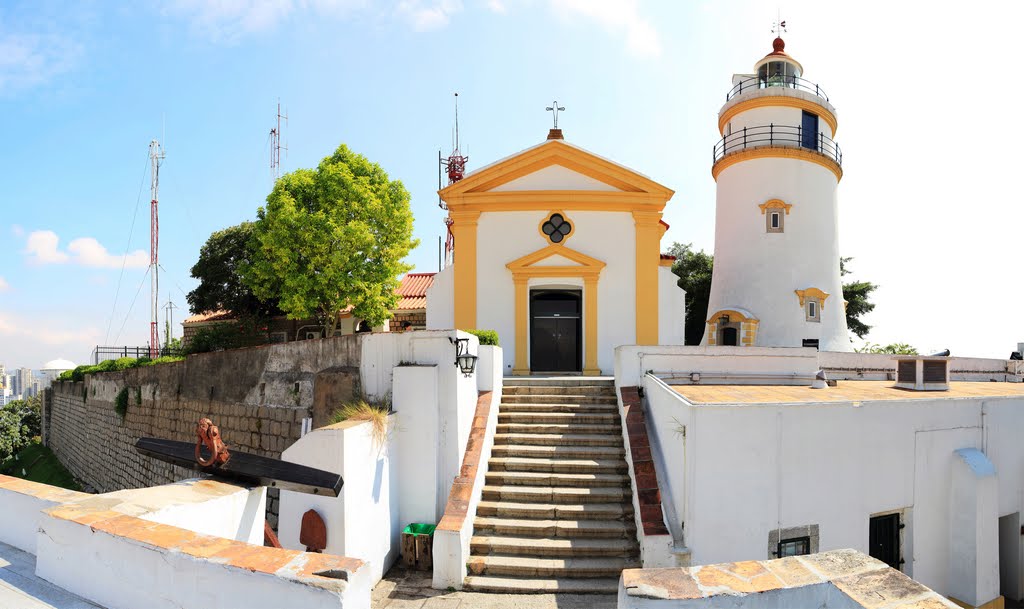
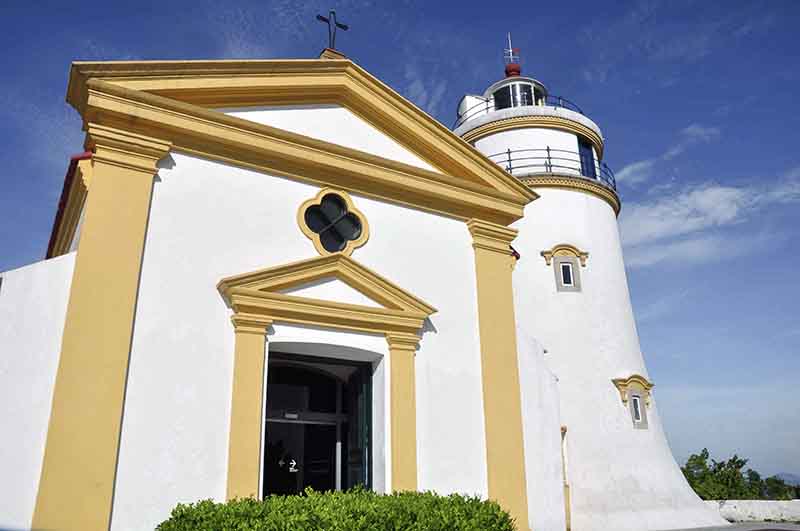
The fortress was built between 1622 and 1638. Inside the fortress stands Guia Chapel, originally established by Clarist nuns, who resided at the site before establishing the Convent of St. Clare. The chapel's elaborate frescoes depict representations of both western and Chinese themes, displaying motifs of religious and mythological inspiration that are a perfect example of Macao's multicultural dimension. Guia Lighthouse, dating from 1865, which also stands within the perimeter, is the first modern lighthouse on the Chinese coast. Guia Fortress, along with the chapel and lighthouse are symbols of Macao's maritime, military and missionary past.
Lotus Square


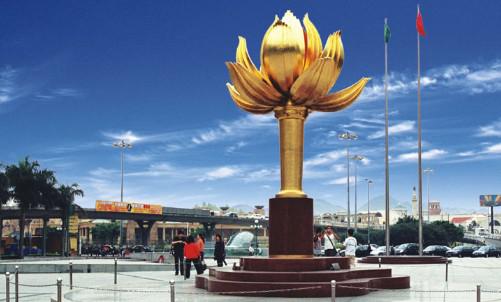

Standing in Lotus Square next to the Forum, the large sculpture of "Lotus Flower In Full Bloom" presented by the State Council of China in 1999, marks the return of sovereignty of Macao.
The sculpture, made of gilded bronze and weights 6.5 tons, is 6 meters high and the diameter of the flower is 3.6 meters at maximum. The major part is composed of a stem, petals and pistil, with a total of 16 components. The base of the flower consists of 23 pieces of red granite.
The lotus flower, which is in full bloom, symbolizes the everlasting prosperity of Macao. There are three layers of red granite at the base, which are in the shape of lotus leaves, signifying the Macao Peninsula, Taipa Island and Coloane Island.
Address: Rua Luís Gonzaga Gomes
Kun Iam Ecumenical Centre
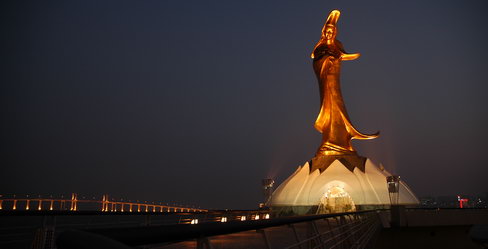
Located on the Outer Harbour, this statue, dedicated to Goddess of Kun Iam (Goddess of Mercy) is 20 meters tall and made of special bronze. The dome shape base like a lotus flower, is an ecumenical centre where information is available on Buddhism, Taoism and Confucianism.
Souvenirs and Cultural Institute publications are available for sale.




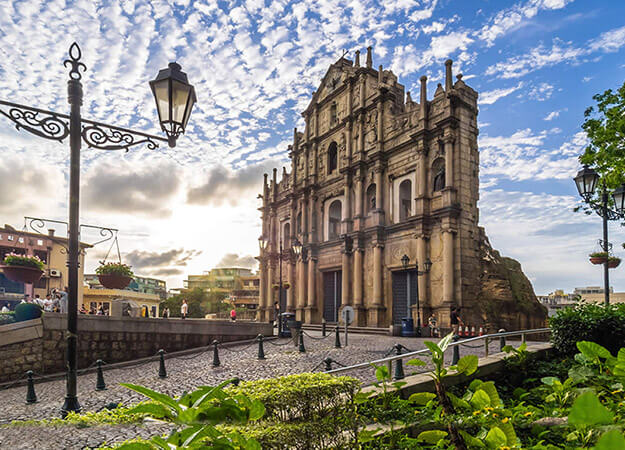 Ruins of St. Paul's
Ruins of St. Paul's 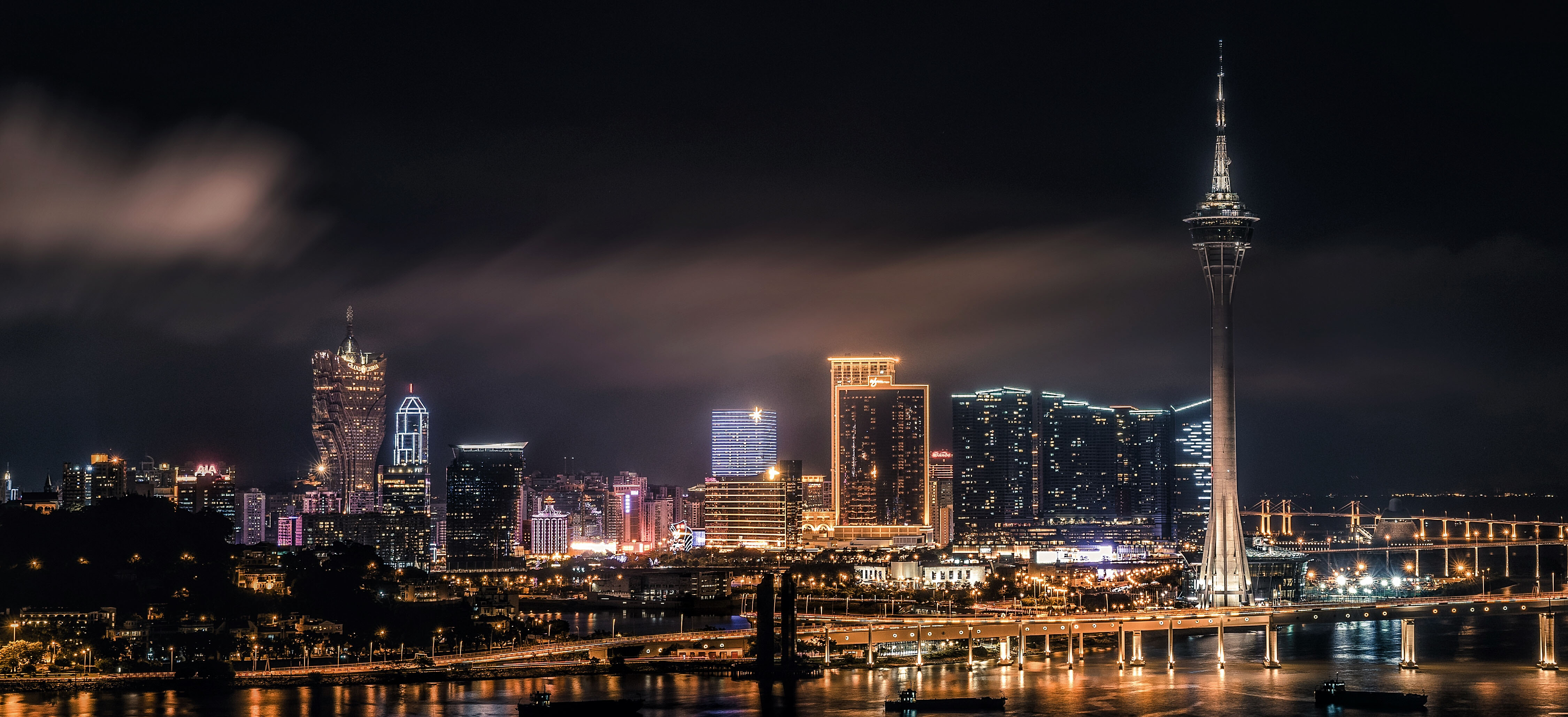 Macau Tower Convention & Entertainment Centre
Macau Tower Convention & Entertainment Centre 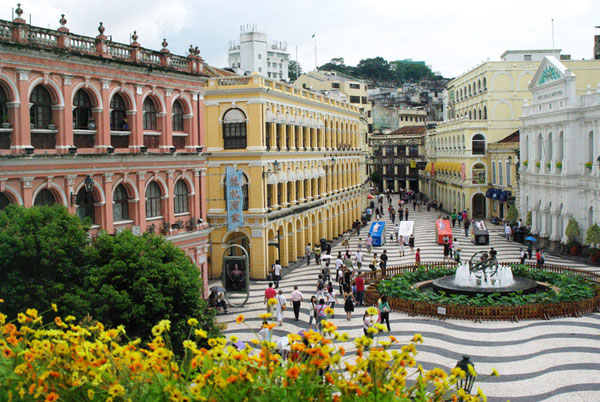 Senado Square
Senado Square 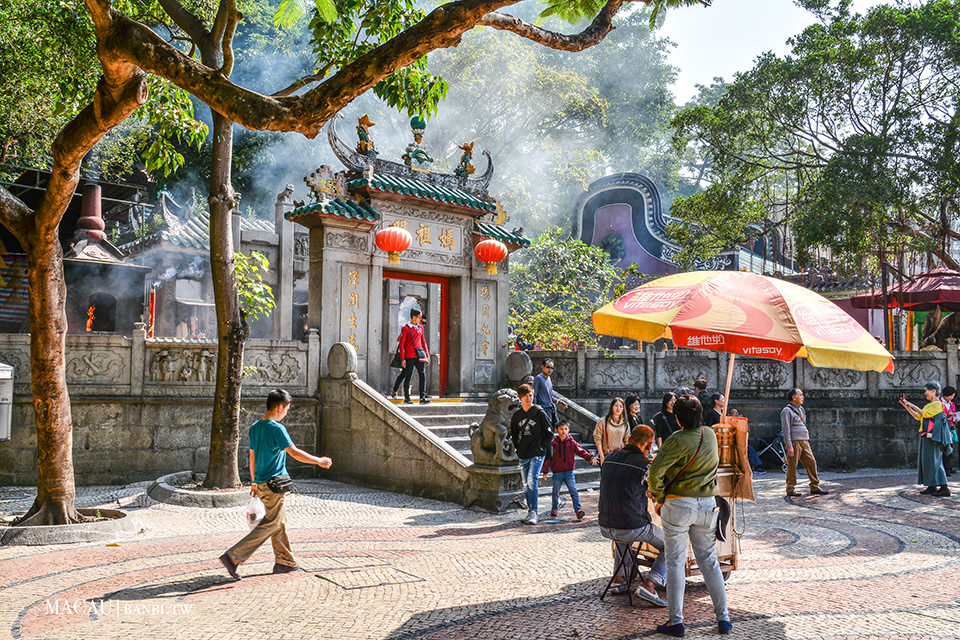 A-Ma Temple
A-Ma Temple 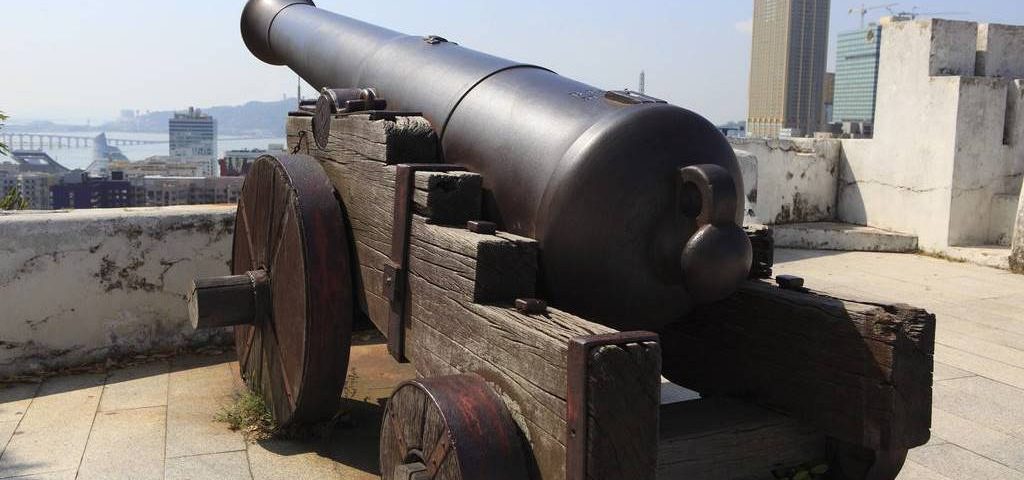 Mount Fortress
Mount Fortress 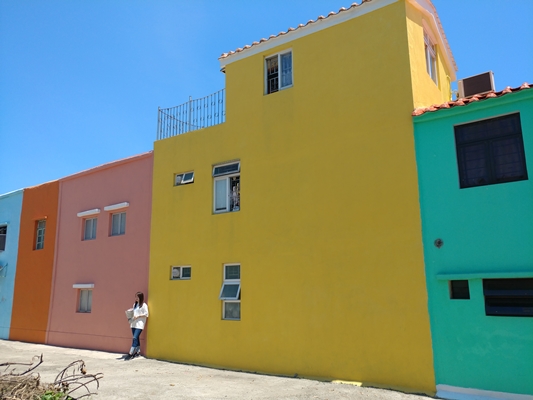 Nostalgia in Coloane
Nostalgia in Coloane 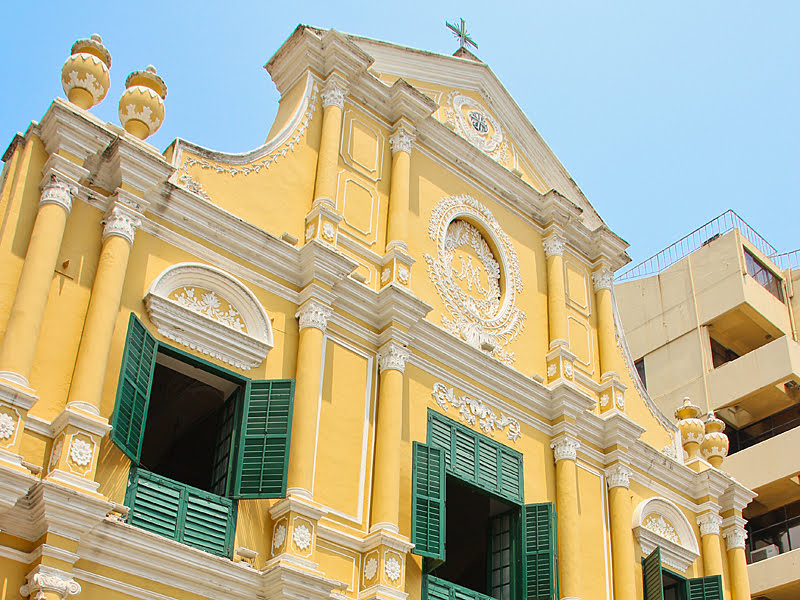 St. Dominic's Church
St. Dominic's Church 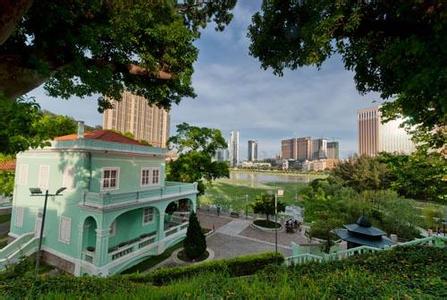 Taipa Houses
Taipa Houses 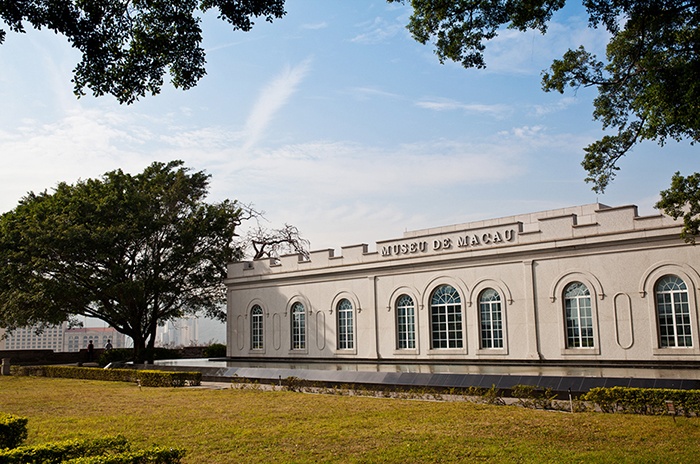 Macao Museum
Macao Museum 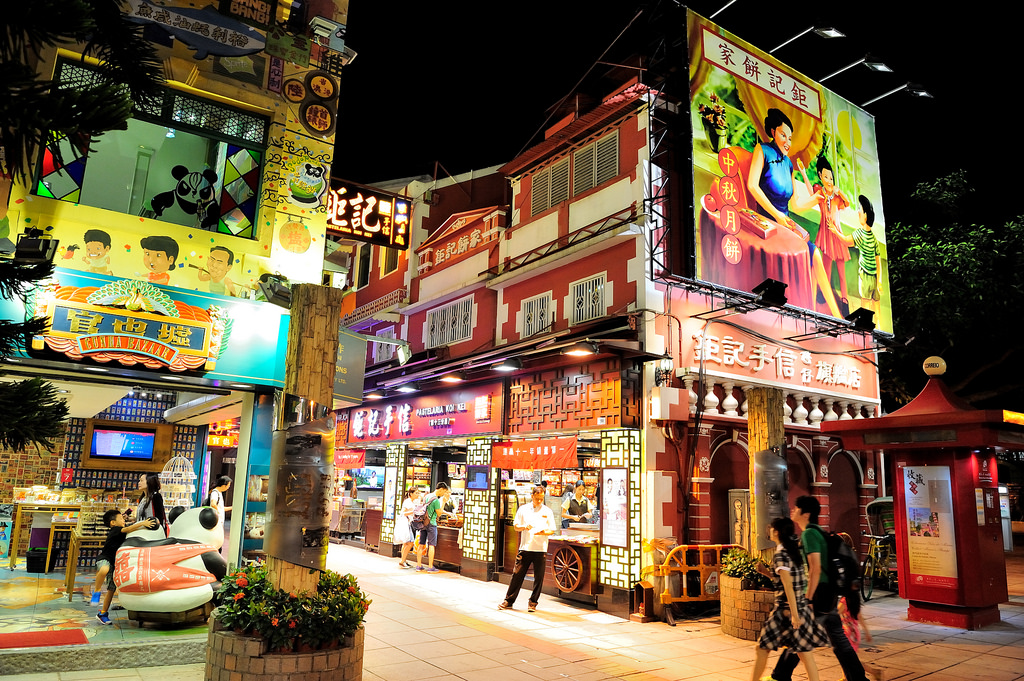 Old Taipa Village
Old Taipa Village  Hác-Sá (‘Black Sand’)
Hác-Sá (‘Black Sand’) 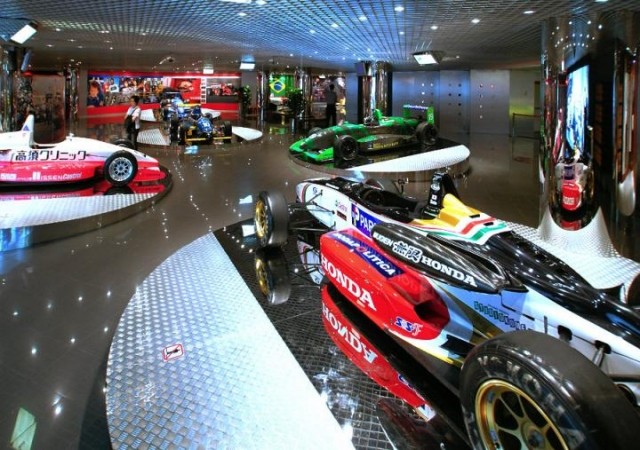 Grand Prix Museum
Grand Prix Museum 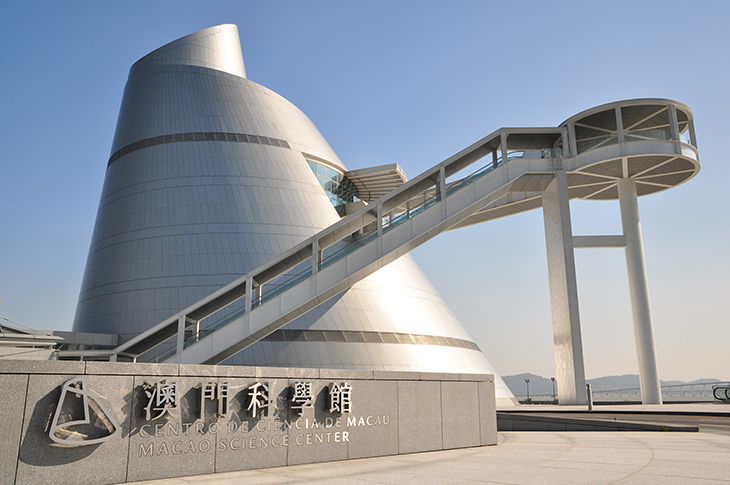 Macao Science Center
Macao Science Center 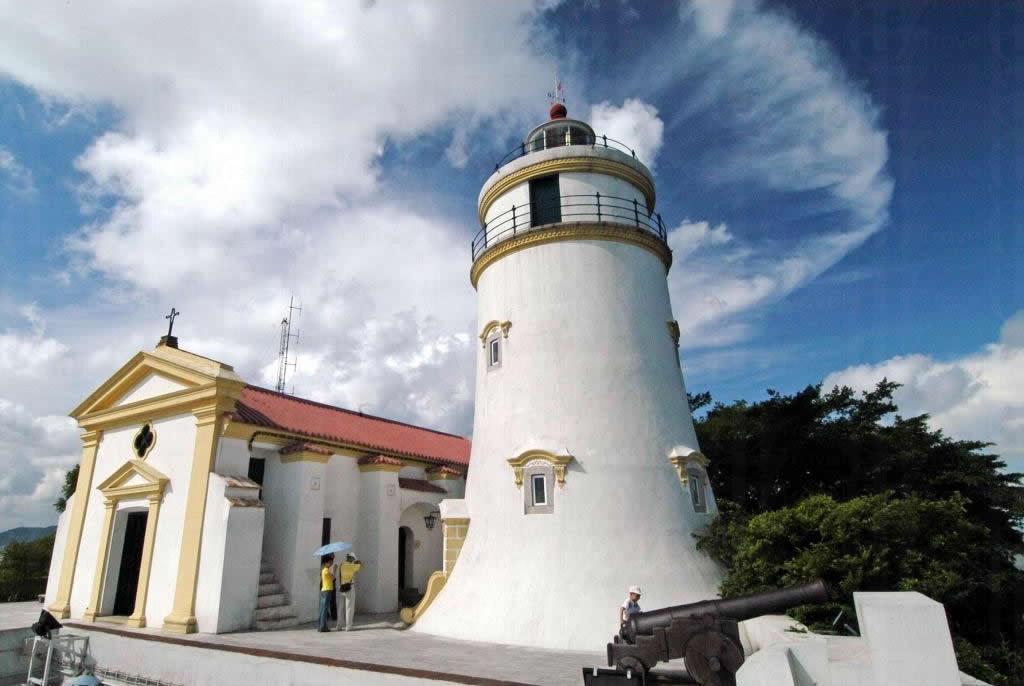 Guia Fortress (including Guia Chapel and Lighthouse)
Guia Fortress (including Guia Chapel and Lighthouse) 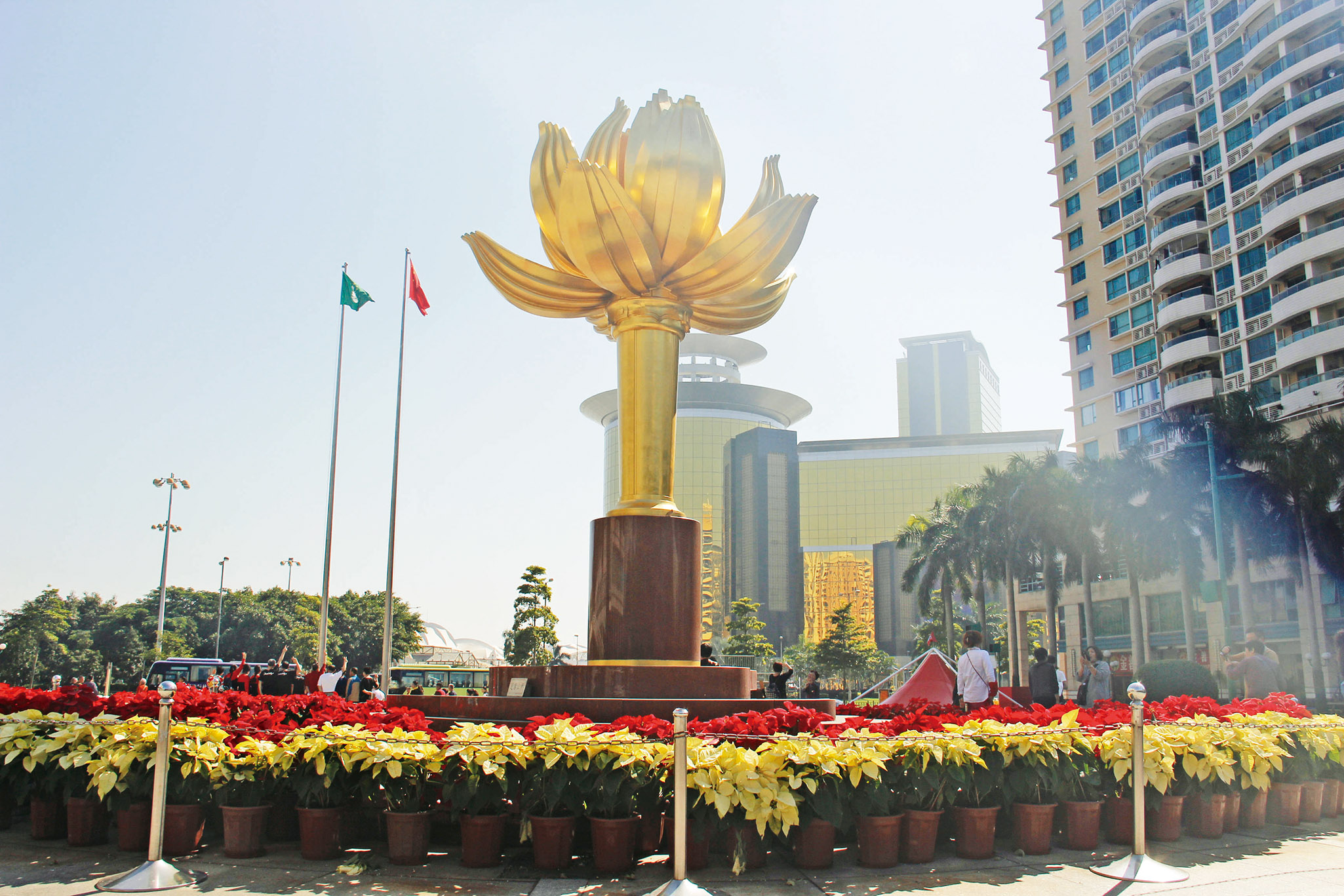 Lotus Square
Lotus Square 